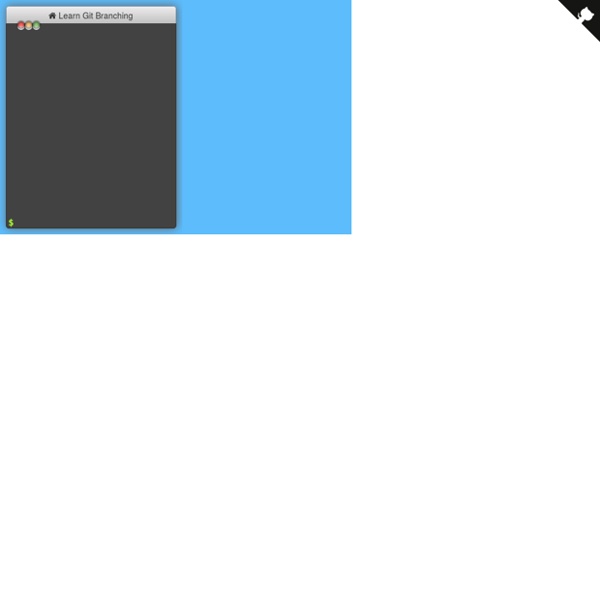



https://learngitbranching.js.org/
Related: THP tools-devops • Git / VersionningSynchroniser son serveur web avec Github Github est un bon moyen de partager ses sources, et intégré dans un workflow, c’est un outil puissant et très efficace, que ce soit pour travailler seul, ou en groupe. C’est aussi un bon moyen de déployer ses fichiers et sources sur son serveur personnel. Ne serait-il pas merveilleux si, à chaque fois que vous "pushiez" des mises à jour vers Github, que ces nouveaux fichiers et modifications soient automatiquement mises à jour sur votre serveur directement? githooks Documentation Hooks are programs you can place in a hooks directory to trigger actions at certain points in git’s execution. Hooks that don’t have the executable bit set are ignored. By default the hooks directory is $GIT_DIR/hooks, but that can be changed via the core.hooksPath configuration variable (see git-config[1]). Before Git invokes a hook, it changes its working directory to either $GIT_DIR in a bare repository or the root of the working tree in a non-bare repository.
A Collection Of Interesting Rails Snippets # Say we have a Blog model and want to create a Comment model for comments. From command line:rails generate scaffold Comment title:string author:string content:text blog:references# Where blog:references is the foreign key that associates the Comment model with the Blog modelrake db:migrate #Run the migration Then in your comment.rb file: belongs_to :blog sans titre Introduction My most read articles on this blog are about Gitlab CI/CD with PHP. They cover a basic linting, testing and crude deploying process.
Advanced Git Log The purpose of any version control system is to record changes to your code. This gives you the power to go back into your project history to see who contributed what, figure out where bugs were introduced, and revert problematic changes. But, having all of this history available is useless if you don’t know how to navigate it. Git cheatsheet for beginners This article was originally published at Git cheatsheet Git is a very useful skill to have and almost necessary in many companies. Browsing job offers for software engineers, you many realize that knowing git is nearly as important as knowing an actual programming language. But still many people forget to check out how git works and what commands are responsible for what action. When some time ago, I created a simple Git and Github tutorial for Youtube, I noticed how many people were interested in this topic.
How to deploy Metabase to make sense of your data At Clever Cloud we manage most of our own data and when we want to gather a particular information, we open our SQL interpreter and query all the things manually. This somehow worked because most of us are technical but it's not necessary the case anymore. So we want a nice dashboarding solution to make data available in a nicer way. This is how we came upon Metabase.
git - the simple guide - no deep shit! git - the simple guide just a simple guide for getting started with git. no deep shit ;) by Roger Dudler credits to @tfnico, @fhd and Namics this guide in deutsch, español, français, indonesian, italiano, nederlands, polski, português, русский, türkçe, မြန်မာ, 日本語, 中文, 한국어 Vietnamese please report issues on github Infuse analytics everywhere with the AI-powered embedded analytics platform. Start your free trial.ads via Carbon
Learning Git This tutorial provides a succinct overview of the most important Git commands. First, the Setting Up a Repository section explains all of the tools you need to start a new version-controlled project. Then, the remaining sections introduce your everyday Git commands. By the end of this module, you should be able to create a Git repository, record snapshots of your project for safekeeping, and view your project’s history. Pipeline gitlab Introduced in GitLab 8.8. Pipelines are the top-level component of continuous integration, delivery, and deployment. Pipelines comprise: Jobs, which define what to do. For example, jobs that compile or test code.
Platform.sh:more than hosting A polyglot, multicloud PaaS, with continuous deployment built in. At Platform.sh we believe your code should just run. Monoliths? Microservices? Stateful? Configuring and Understanding Zsh There are many boring tasks we repeat day after day: creating, copying, moving or searching files, launching again and again the same tools, docker containers, and whatnot. For a developer, the shell is a precious asset which can increase your efficiency over time. It will bring powerful tools at your fingertips, and, more importantly, it will allow you to automate many parts of your workflow.